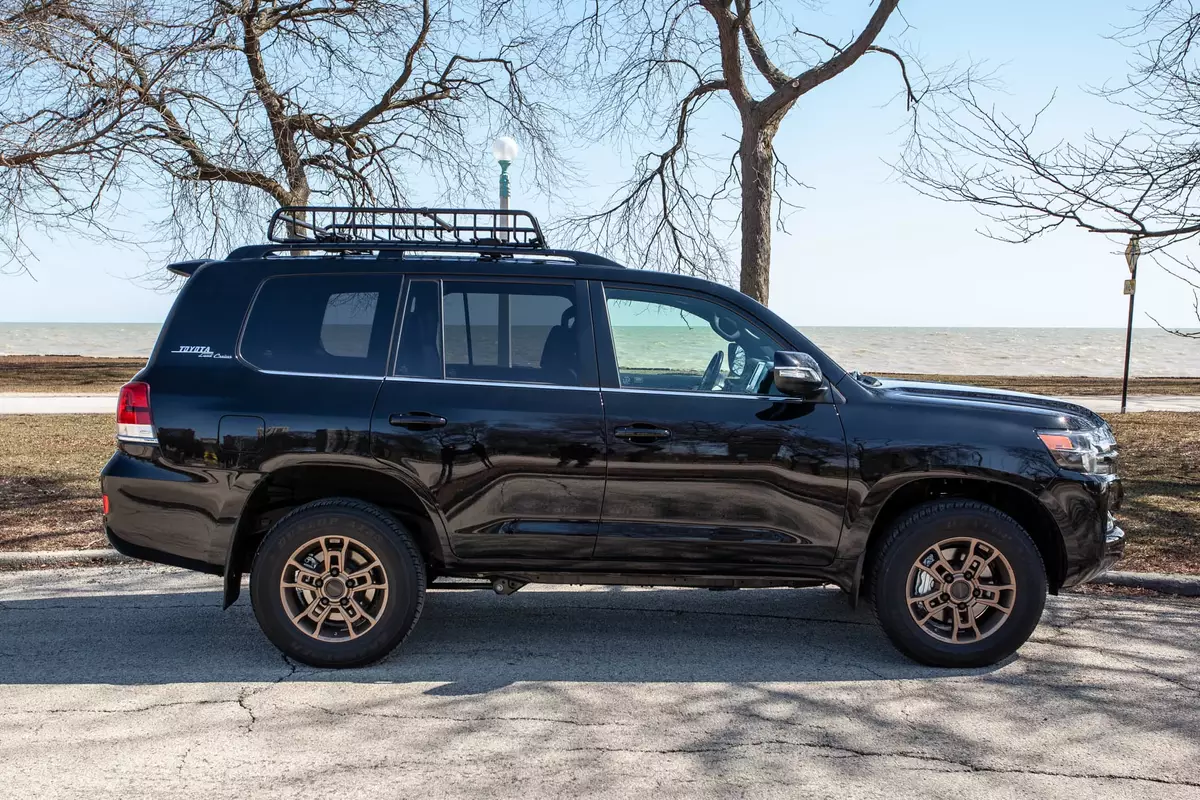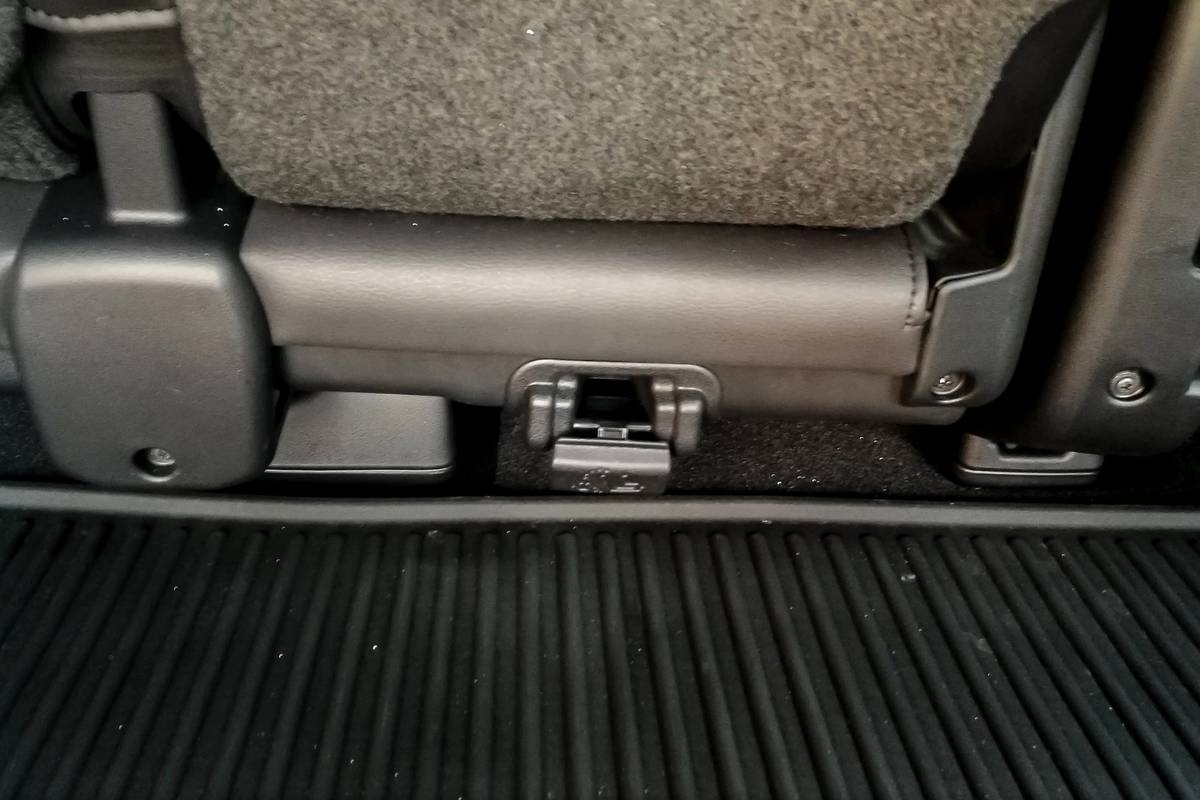How Do Car Seats Fit in a 2021 Toyota Land Cruiser?


The verdict: Toyota’s large Land Cruiser SUV may be a dinosaur when it comes to refinement and fuel economy, but its backseat is still relevant in the realm of car seats. For this Car Seat Check, we tested a two-row version of the 2021 Land Cruiser (a third row is optional), and we were pleased by its easy-access Latch anchors and roomy backseat.
Does it fit three car seats? Yes
Take a look at how the Latch system and each car seat scored below in our Car Seat Check of the 2021 Toyota Land Cruiser.
Related: Search Car Seat Checks

A Grade
- Latch: The two sets of Latch anchors sit under Velcro flaps, and they’re easy to use. Three top tether anchors sit on the seatback. The outboard anchors are a third of the way down the seat and clearly marked; the middle one, however, sits at the base of the seatback and is not very well marked.
- Infant seat: Installation was easy, and our 5-foot-6-inch front passenger had loads of legroom in front with the infant seat installed behind.
- Rear-facing convertible: As with the infant seat, installation was easy and front-passenger legroom wasn’t an issue with the rear-facing convertible installed behind.

B Grade
- Forward-facing convertible: After raising the head restraint, the seat fit well in forward mode. Caregivers should be careful of the middle seat’s top tether anchor placement, however: The anchor is way down at the base of the seat under a cover and not clearly marked.
- Booster: After removing the head restraint, the booster fit well. The Land Cruiser’s floppy buckles might be difficult for kids to grasp and use independently, however.
C Grade
- None
Grading Scale
A: Plenty of room for the car seat and the child; doesn’t impact driver or front-passenger legroom. Easy to find and connect to Latch and tether anchors. No fit issues involving head restraint or seat contouring. Easy access to the third row.
B: One room, fit or connection issue. Some problems accessing the third row when available.
C: Marginal room plus one fit or connection issue. Difficult to access the third row when available.
D: Insufficient room, plus multiple fit or connection issues.
F: Does not fit or is unsafe.
About Cars.com’s Car Seat Checks
Editors Jennifer Geiger and Jennifer Newman are certified child safety seat installation technicians.
For the Car Seat Check, we use a Chicco KeyFit 30 infant-safety seat, a Graco Contender 65 convertible seat and Graco TurboBooster seat. The front seats are adjusted for a 6-foot driver and a shorter passenger. The three child seats are installed in the second row. The booster seat sits behind the driver’s seat, and the infant and convertible seats are installed behind the front passenger seat.
We also install the forward-facing convertible in the second row’s middle seat with the booster and infant seat in the outboard seats to see if three car seats will fit; a child sitting in the booster seat must be able to reach the seat belt buckle. If there’s a third row, we install the booster seat and a forward-facing convertible. Learn more about how we conduct our Car Seat Checks.
Parents should also remember that they can use the Latch system or a seat belt to install a car seat, and that Latch anchors have a weight limit of 65 pounds, including the weight of the child and the weight of the seat itself.
Cars.com’s Editorial department is your source for automotive news and reviews. In line with Cars.com’s long-standing ethics policy, editors and reviewers don’t accept gifts or free trips from automakers. The Editorial department is independent of Cars.com’s advertising, sales and sponsored content departments.

News Editor Jennifer Geiger joined the automotive industry in 2003, much to the delight of her Corvette-obsessed dad. Jennifer is an expert reviewer, certified car-seat technician and mom of three. She wears a lot of hats — many of them while driving a minivan.
Featured stories




